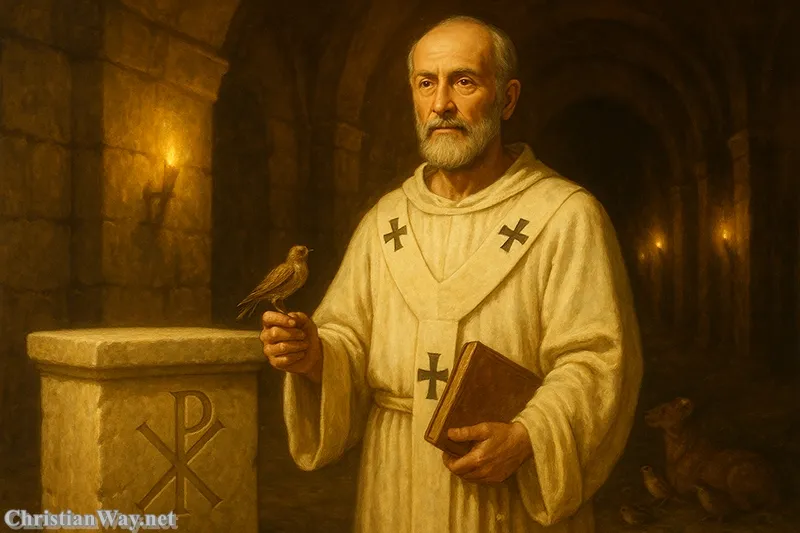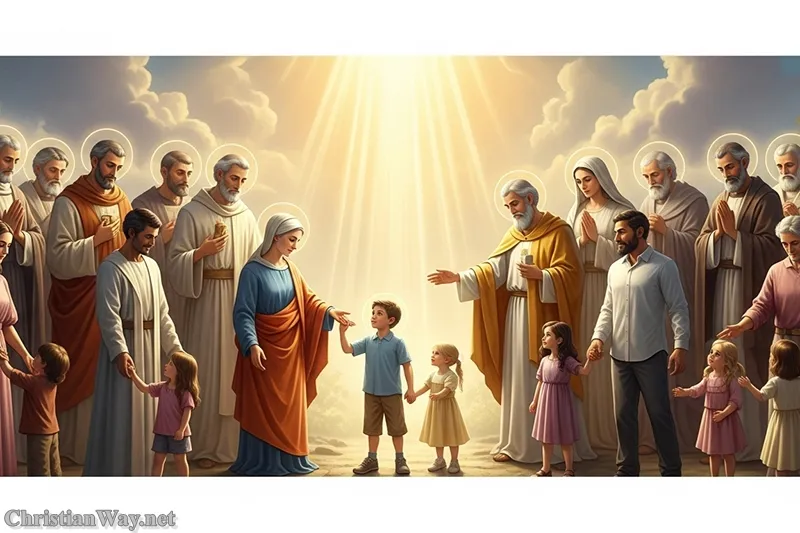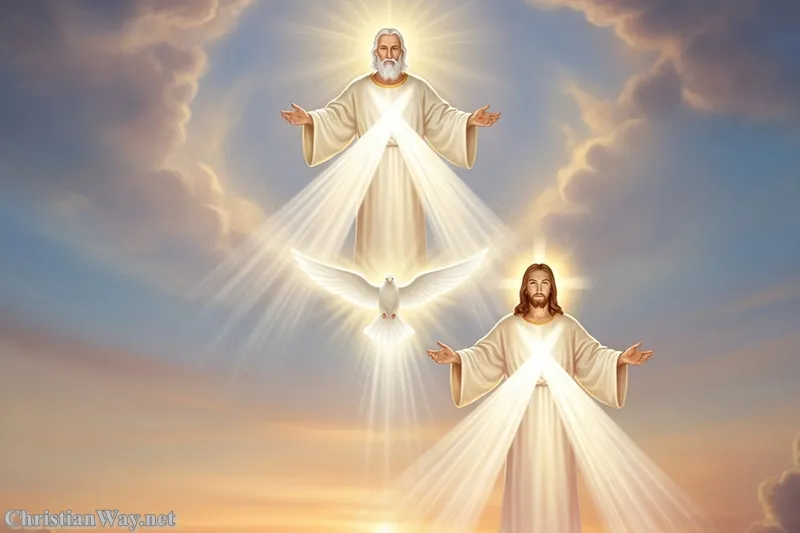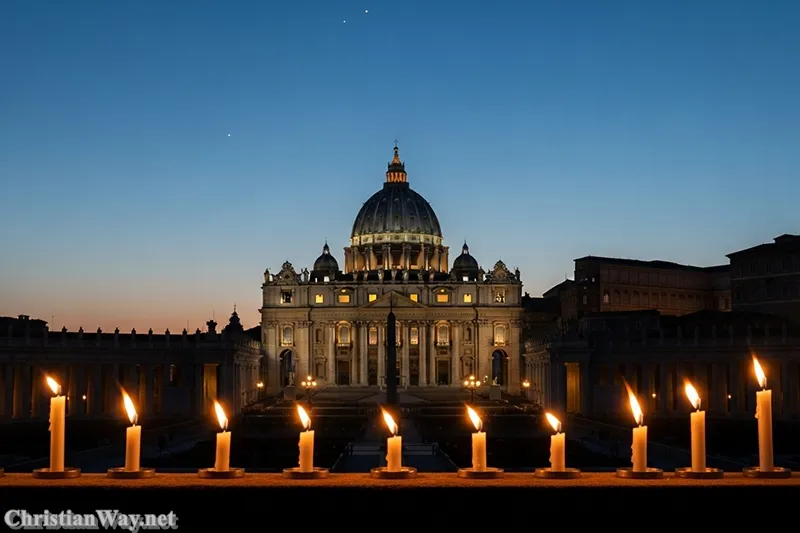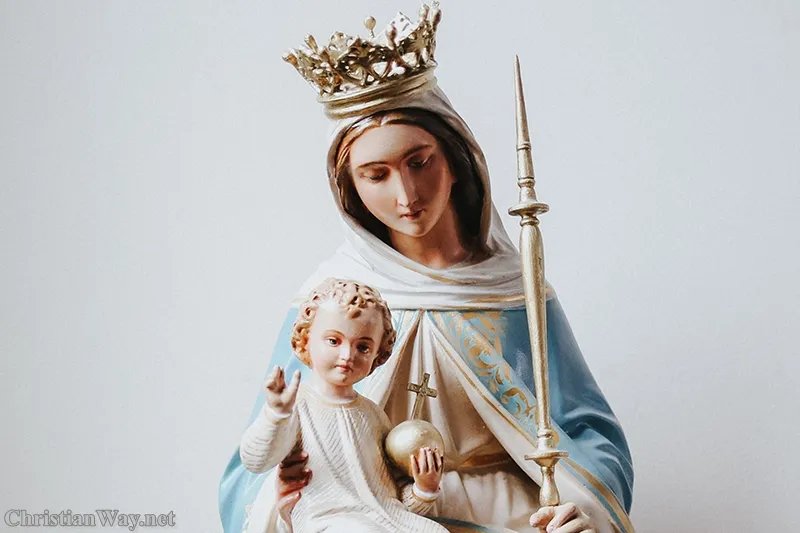Dear friends in Christ,
Among all the figures in the history of salvation, few shine with such quiet splendor as the Virgin Mary, the Mother of Jesus. Her life, though hidden and humble, is like a thread of light that runs through the mystery of our redemption. To speak of Mary is not merely to look back upon an ancient story, but to contemplate how the grace of God touches humanity in its most tender form. She is not distant or mythic; she is real, human, and close to us — the first believer, the first disciple, the first to receive the Word into her heart and body.
In Catholicism, the Virgin Mary holds a place unlike any other creature. She is honored not for her own sake alone, but because in her we see the perfect response to God’s call — a heart fully open to His will. Every “Hail Mary” whispered in faith is not only a word to her, but through her, a word to Christ Himself, who became flesh in her womb. To understand the Virgin Mary in Catholic life is to understand the beauty of what God can do in a human soul that says, “Let it be done to me according to Your word” (Luke 1:38).

Let us, then, walk through the meaning of Mary’s presence in Catholic faith — her divine motherhood, her sinless heart, her role as intercessor, and her ongoing guidance for the Church and for every believer who longs to say “yes” to God as she did.
Mary, the Mother of God (Theotokos)
The title “Mother of God” (in Greek, Theotokos) is at the heart of Marian belief in the Catholic Church. Declared dogmatically at the Council of Ephesus in 431 AD, it expresses the profound truth that Jesus Christ, born of Mary, is both fully God and fully man.
When Mary conceived Jesus by the Holy Spirit, she did not merely bear a holy prophet or a blessed teacher — she bore the eternal Son of God. Therefore, to call her “Mother of God” is not to elevate her above the Creator, but to affirm that in her womb the divine and human were united forever in the person of Jesus Christ.
This truth safeguards the mystery of the Incarnation. As St. Cyril of Alexandria wrote:
“If our Lord Jesus Christ is God, how can the holy Virgin who bore Him not be the Mother of God?”
Mary’s motherhood is divine not because she is the source of Christ’s divinity, but because she is the mother of the divine Person — the eternal Word who became flesh (John 1:14). Through her, the infinite God entered time and space, taking on our humanity to redeem it from within.
Every Christmas, every Eucharist, every act of faith in Christ is a quiet remembrance of that sacred moment when Mary said “yes,” and the Word took flesh in her.
The Immaculate Conception: Mary Full of Grace
Catholic teaching holds that Mary was conceived without original sin — a truth known as the Immaculate Conception, defined by Pope Pius IX in 1854. This grace was not earned but given in advance, by the merits of her Son’s future passion and resurrection.
This means that from the very first moment of her existence, Mary was preserved from the stain of sin. God, who exists beyond time, applied the redemption of Christ to her in anticipation — so that she could be a pure and holy dwelling for His Son.
In the words of the Angel Gabriel:
“Hail, full of grace, the Lord is with you” (Luke 1:28).
“Full of grace” — not merely touched by grace, but completely filled with it. Her heart was the soil in which no sin could take root. Yet her holiness did not make her distant or untouchable. Rather, it made her more human, more compassionate, more motherly.
She knew what it meant to trust God amid confusion. She knew the pain of loss and the silence of unanswered questions. Her purity did not remove her from suffering; it made her capable of loving within it.
Mary as the New Eve
In Catholic theology, Mary is often called the New Eve. Just as Eve’s disobedience opened the door to sin, Mary’s obedience opened the door to salvation.
When the angel brought the divine message, Mary freely consented. Her “yes” was not passive acceptance but active faith — a wholehearted cooperation with God’s plan. In her, the human race’s story begins again.
“As Eve was seduced by the word of an angel and fled from God, having transgressed His word, so Mary received the glad tidings from an angel and bore God within her, obeying His word.” — St. Irenaeus of Lyons
Through her “fiat” — “Let it be done unto me according to your word” — the world was offered redemption. The tree of disobedience was replaced by the tree of the Cross, and the fruit of that new tree is life itself.
The Perpetual Virginity of Mary
The Catholic Church also professes that Mary remained a virgin before, during, and after the birth of Christ — not as a denial of her humanity, but as a sign of her total consecration to God.
Her virginity is not only physical but spiritual, a symbol of undivided devotion. It reveals that the birth of Jesus was purely the work of the Holy Spirit, free from the natural order of human generation.
In a world that often measures worth by productivity and possession, Mary’s virginity stands as a sign that true fruitfulness comes from God’s grace, not human effort. Her life proclaims that holiness is born from surrender, not strength.
As the early Church Fathers taught, the womb that carried the Creator remained forever sacred — “a garden enclosed, a fountain sealed” (Song of Songs 4:12).
Mary at the Cross
No moment reveals Mary’s heart more clearly than when she stood at the foot of the Cross.
While others fled in fear, she remained. She could not ease His pain or halt the nails, but she could love Him through it. Her silent presence beside her dying Son became a living icon of faith under suffering.
When Jesus said,
“Woman, behold your son… Behold your mother” (John 19:26–27),
He entrusted her not only to John but to all believers.
In that moment, the Virgin Mary became the mother of the Church — the mother of every disciple who follows Christ. Her motherhood did not end with Jesus’ earthly life; it expanded to include us all.
This is why Catholics call her “Mother of the Church,” as proclaimed by Pope Paul VI. She who bore the Savior continues to bear us, spiritually, into His life.
The Assumption: Mary’s Share in Glory
Catholic faith teaches that at the end of her earthly life, Mary was assumed body and soul into heaven — a truth known as the Assumption, defined by Pope Pius XII in 1950.
This mystery is not only about her but about our destiny as well. Mary’s Assumption is a sign of what awaits all who live and die in Christ — the resurrection of the body and life everlasting.
Just as she shared in His suffering, she now shares in His glory. She stands before us as a sign of hope, reminding the Church that holiness does not end in the grave.
“Today the Virgin is taken up to heaven, to begin her reign of intercession for the world.” — Liturgy of the Assumption
Mary’s Role as Intercessor
Catholics do not worship Mary; worship belongs to God alone. But we honor her, love her, and ask her prayers — just as we might ask a beloved friend to pray for us.
The difference is that Mary’s intercession is uniquely powerful, because of her closeness to her Son. At Cana, when she noticed the couple’s need, she simply said, “They have no wine,” and Jesus responded, transforming water into wine — His first public miracle (John 2:1–11).
Her intercession is not commanding, but maternal — quiet, confident, and full of love. When we pray the Rosary, we enter that same conversation, letting her lead us to the heart of Christ.
She does not replace Jesus; she reflects Him. Every grace that flows through her comes from Him. To love Mary rightly is to love Jesus more deeply.
Mary in the Life of the Church Today
From the earliest centuries, Christians have honored the Virgin Mary in art, song, and prayer. Her image graces cathedrals and homes not as an idol, but as a reminder of what it means to be a faithful disciple.
Throughout history, she has appeared in moments of crisis — at Guadalupe, Lourdes, and Fatima — calling the world to conversion, prayer, and peace. In every age, her message is the same: “Do whatever He tells you” (John 2:5).
Mary teaches the Church to live in trust. In her we learn to listen, to ponder, to love quietly, and to serve without recognition. She is not a distant queen, but a mother who walks beside us, helping us become more like her Son.
When we pray, “Holy Mary, Mother of God, pray for us sinners, now and at the hour of our death,” we are asking her to hold us in her heart — the same heart that once beat in rhythm with the heartbeat of God.
Reflect and Pray
The Virgin Mary in Catholicism is not a figure of excess devotion or theological ornament. She is the living witness of what grace can do in a soul that fully belongs to God.
In her, we see the humility that welcomes mystery, the courage that endures suffering, and the love that never ends. She stands as both mirror and mother — showing us what it means to say “yes” to God, again and again, in the ordinary days of our lives.
Let us turn to her not in superstition, but in trust. Let her hand lead us to the heart of Jesus, where her maternal intercession continues to whisper, “They have no wine,” when our hearts run dry.
Prayer
O Blessed Virgin Mary,
Mother of God and Mother of the Church,
teach us to listen with your heart,
to trust as you trusted,
and to say “yes” to the Lord in all things.
May your Son, our Lord Jesus Christ,
fill us with His peace,
and may your gentle intercession
guide us safely to His eternal embrace.
Amen.
— Fr. John Matthew, for Christian Way
